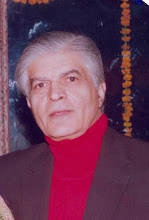The Human Body
Digestive System Part I
The grinder, liquidizer, chemical splitter and soak-up chamber
INTRODUCTION All in a nut shell
All of us need to eat. Every cell in our body including nerve cells, muscle, bone cells or cells of digestive tract perform work and this requires energy.
The energy source for us is food that we eat. This food is not in the form that the body can use to produce energy. The digestive system converts food to useable form i.e., the small simpler molecules that can be absorbed and passed on to the cells through the blood.
Plants and animal tissues are items that are food for us.
These items of food (after cooking) need to be broken down by our digestive system.
First by our teeth, and after that by the action of enzymes, in the digestive system.
The result of digestion is the production of simple units that can be absorbed by the intestines and used by our body.
These units are glucose from carbohydrates, amino-acid from protein and triglycerides from fats.
These energy units are used by the body for:
- converting into heat
- for contraction of muscles,
- use in production of enzymes for building/repair
- and for excretion of waste material.
Energy units can also be stored (banked) for future use after the other body needs have been met.
The digestive events start with the sight and smell of food. The salivary glands produce saliva (your mouth waters). Juices are also produced in the stomach on seeing food.
This entire chemical series of events occur in the hollow tubes with the help of juices of the alimentary canal and the juices provided by the liver and pancreas.
EVENTS IN THE MOUTH The chopper grinder
Your teeth chop and grind the food
The muscle of the jaw is very powerful and is responsible for this chopping and grinding. The saliva from the salivary glands moistens the food -making the grinding easier.
The salivary glands (Parotid, submandibular and sublingual) produce 1500 cc of saliva in a day.
The combined effect of grinding moistening converts the food into soft pulp.
The enzymes in the saliva breakdown the carbohydrate by a chemical process. The saliva secreted in between the meals keeps the mouth and teeth washed and cleaned.
The saliva also contains proteins (immunoglobins) to protect against infection. The body heat in the mouth also warms the food before swallowing.
The softened food ball can now be swallowed. The breathing stop for a moment. The soft palate closes off the passage to the back of the nose to stop its entry to the nose. The epiglottis closes off the wind pipe.
If you swallow too early or while speaking, you cough because the wind pipe has not been closed. The food enters the wind pipe and then the cough forces these food particles out. This protects the respiratory system from blockage and infection.
The food ball can now be thrown by the back of the tongue into the pharynx (gullet); the esophagus is open like a funnel below the pharynx, and accepts the food.
Any question should be address to: consensusdc@yahoo.co.in you will receive further information regarding your question.
All posts are stored in the archives for access and review
Visit www.drmmkapur.blogspot.com for updates and new additions
Thursday, February 4, 2010
Subscribe to:
Post Comments (Atom)





No comments:
Post a Comment